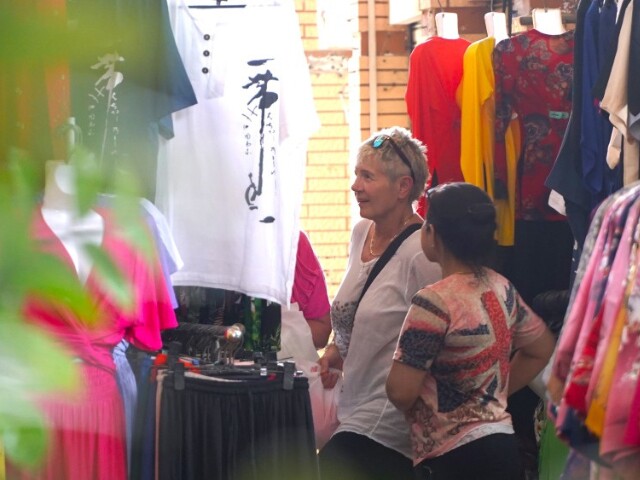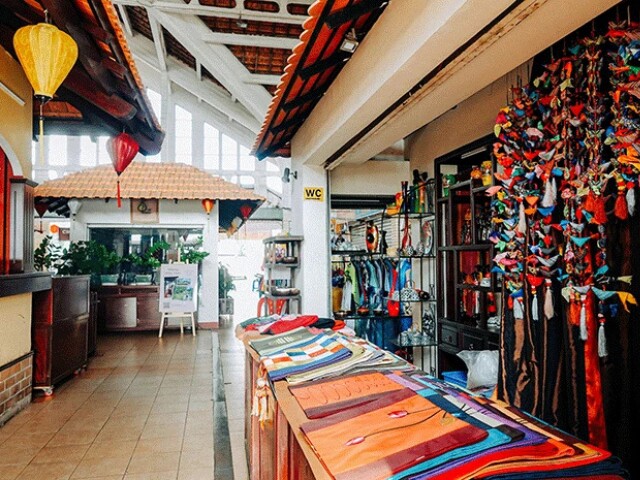Cần Thơ’s Ancient Market: A Historical Trading Hub in the Heart of the Mekong Delta

Dating back to the early 20th century, Cần Thơ’s ancient market, known as Chợ Hàng Dương or Chợ Lục Tỉnh, held a prominent position among the largest villages’ markets in the Monographie de la Província de Can Tho (1904). Located in Tân An village, Định Bảo district, it thrived as a bustling trading center, especially for the six provinces of Southern Vietnam.

Cần Thơ, then part of the Vĩnh Thanh district along with Long Xuyên and Châu Đốc, witnessed a name change during the reign of Emperor Minh Mạng. Châu Đốc became An Giang, and Cần Thơ transformed into Phong Phú district. The ancient market also bore different names, reflecting its significance as a hub for merchants and traders from across the six provinces.

By 2005, the old Hàm Dương market had deteriorated significantly, prompting the Cần Thơ city government to invest heavily in reconstructing it while preserving its original architectural style. The new market was named Chợ Cần Thơ, but locals continued to refer to it as the ancient market due to its century-old history. Nestled within the market is a unique food court, aptly named ‘nhà lồng’, offering a delightful array of culinary delights to visitors.


Spanning an area of approximately 1,700 square meters, the ancient market’s ‘nhà lồng’ boasts a distinctive T-shaped design, with its main entrance facing Hai Bà Trưng Street. The central structure features a grand clock tower accompanied by two smaller symmetrical towers. The sides are constructed in a ‘trùng thiềm điệp ốc’ style, with three layers of roofs and an upper floor with a veranda, creating a captivating visual appeal.

The market’s architectural grandeur is further enhanced by its intricate details, including yin-yang tiled roofs, fishbone-shaped ceilings, and exquisitely carved columns and beams. The clock tower’s pinnacle is adorned with stylized fireball and dragon cloud motifs, while the main tower’s corridor features intricate ky ha patterns, adding a unique touch. The intersection of the T-shaped roof is supported by four concrete columns, and the main tower is complemented by a tiled veranda, unifying the design.


Cần Thơ’s ancient market is a magnet for domestic and international tourists alike, offering a diverse range of local specialties, souvenirs, and handicrafts that embody the essence of the Mekong Delta. Over 20 shops display an array of handcrafted items, including conical hats, wooden and coconut shell products, traditional ‘ao ba ba’ garments, and other artisanal creations. Additionally, the market features an assortment of agricultural and aquatic products, catering to the varied tastes of its visitors.

In 2009, the city of Cần Thơ embarked on a transformative journey, developing a pedestrian street, culinary hub, night market, and souvenir shops along the Ninh Kiều wharf, adjacent to the ancient market. This vibrant area operates from 6 pm to 4 am, providing an immersive experience for shoppers, diners, and explorers alike.

A pivotal moment arrived in 2010 when the ‘nhà lồng’ of the ancient market was officially recognized as a symbol of the city, immortalized in a stylized logo representing Cần Thơ. More than just a traditional marketplace, this historic site has become an integral part of the local culture, witnessing the passage of generations and enduring as an iconic landmark in the charming and rustic landscape of Cần Thơ.
The Mighty River’s Enclave: A Haven for Travelers
TPO – Cồn Sơn, a quaint island nestled in the heart of the Hau River in Can Tho, has earned the nickname “the oasis of the Mekong.” This idyllic destination captivates visitors with its untouched natural beauty and unique glimpse into the cultural traditions and livelihoods of the riverine community. The island’s allure lies in its pristine landscapes, warm hospitality, and abundance of delectable specialties from Vietnam’s Mekong Delta region. From the exotic fish of the Mekong River to the captivating flying snakehead fish and juggling frogs, as well as lush orchards, Cồn Sơn offers a truly authentic and enchanting experience.
The Ultimate Guide to the Unusual Insect Market of the West: Unveiling the Alluring “Spring Tonic” Legend that Fascinates Men
Tịnh Biên Market, located near the Tịnh Biên – Phnom Den International Border Gate in the town of the same name in An Giang Province, is a bustling hub of activity, attracting not just local shoppers but also traders from Cambodia. What sets this market apart is its unique offering of exotic insects, creating a vibrant and lively atmosphere unlike any other.
The Elusive Ca Mau Specialty Fish: A Seasonal Delicacy that Has Women in a Flurry to Avoid Missing Out.
In Ca Mau, the spawning season for knifefish typically occurs from around March to June. The exact timing can vary depending on weather conditions and the environment. This period marks a bustling time for the local fishing industry, as these fish are a prized catch for their delicious taste and high nutritional value. The unique reproductive cycle of knifefish, influenced by the region’s climate and habitat, contributes to the vibrant fisheries and culinary culture of Ca Mau.



































